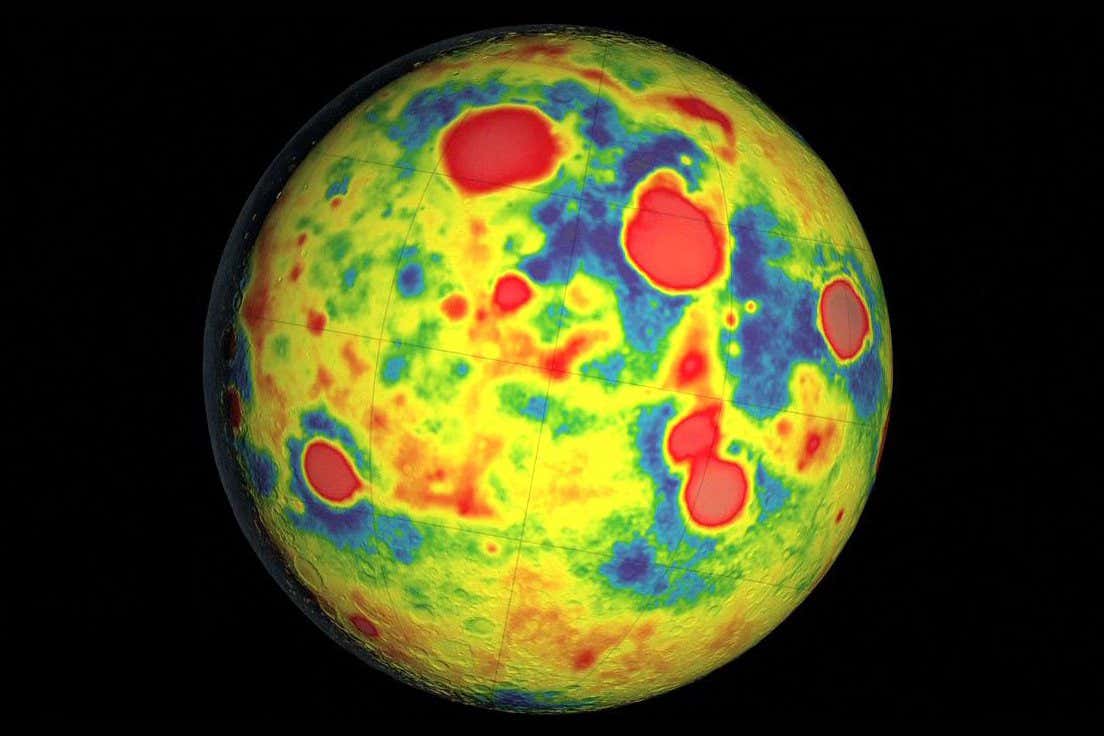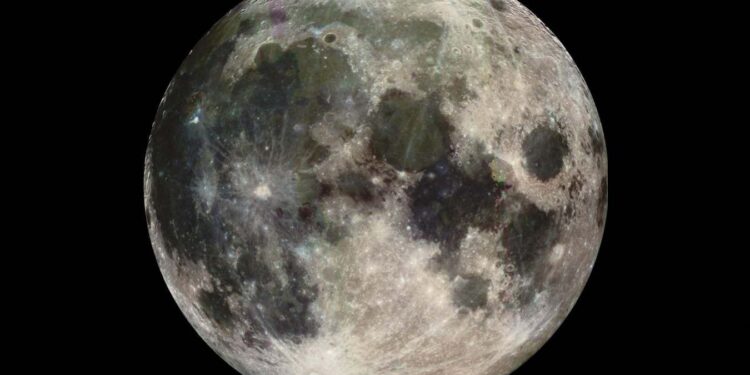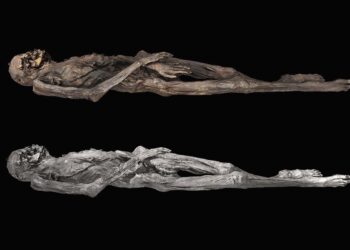
A map showing anomalies in the moon’s gravitational field, based on data from NASA’s GRAIL mission
NASA/JPL-Caltech/MIT/GSFC
Earth’s gravitational pull on the moon has revealed that our satellite’s interior is warmer on its near side, the one facing our planet, suggesting its insides are uneven.
We have known that the moon’s near side looks different from its far side since we first began observing it. But we haven’t been sure whether that difference reflects something quite literally deeper – something under the moon’s surface, says Ryan Park at NASA’s Jet Propulsion Laboratory in California. He and his colleagues have now used data from NASA’s GRAIL spacecraft to prove it does.
In the GRAIL mission, two spacecraft orbited the moon in 2011 and 2012 while collecting data on how the moon’s gravity affected their respective motion. Because its gravitational field reflects its physical features, this let researchers calculate the moon’s shape and how it is deformed by the tidal pull of the Earth.
But the details of this gravitational field couldn’t be explained by just the outer lunar appearance – researchers had to consider whether the interior could be uneven. Past studies predicted that the moon’s near side would deform more than its far side in response to Earth’s pull, says Jeffrey Andrews-Hanna at the University of Arizona. The new work confirms that and “provides a new look into the interior of the moon”, he says.
Park and his team used the GRAIL data to precisely calculate how susceptible the moon is to changing shape in response to Earth’s gravity. They found that this measure is 72 per cent larger than it would be if the moon’s interior were perfectly even and symmetrical.
The team explored different reasons for this anomaly, such as the chemical make-up of the moon. But the model that best matched the measurements was one where the near side of the moon’s interior is warmer than its far side: a lopsided temperature distribution.
Sean Solomon at Columbia University in New York says that this model of the lunar interior is also consistent with what we know about the moon’s volcanic history and the distribution of radioactive elements, such as uranium and thorium, close to its surface.
How exactly the moon ended up this way remains an open question, though some of its uneven insides may be due to a history of collisions with other objects, says Park. Going forward, he and his team want to use seismic measurements of so-called moonquakes to strengthen their understanding of the lunar interior. Those measurements will come from instruments like the Farside Seismic Suite, which NASA plans to launch in 2026.
Topics:
Source link : https://www.newscientist.com/article/2480137-one-half-of-the-moon-is-hotter-than-the-other/?utm_campaign=RSS%7CNSNS&utm_source=NSNS&utm_medium=RSS&utm_content=home
Author :
Publish date : 2025-05-14 16:00:00
Copyright for syndicated content belongs to the linked Source.














